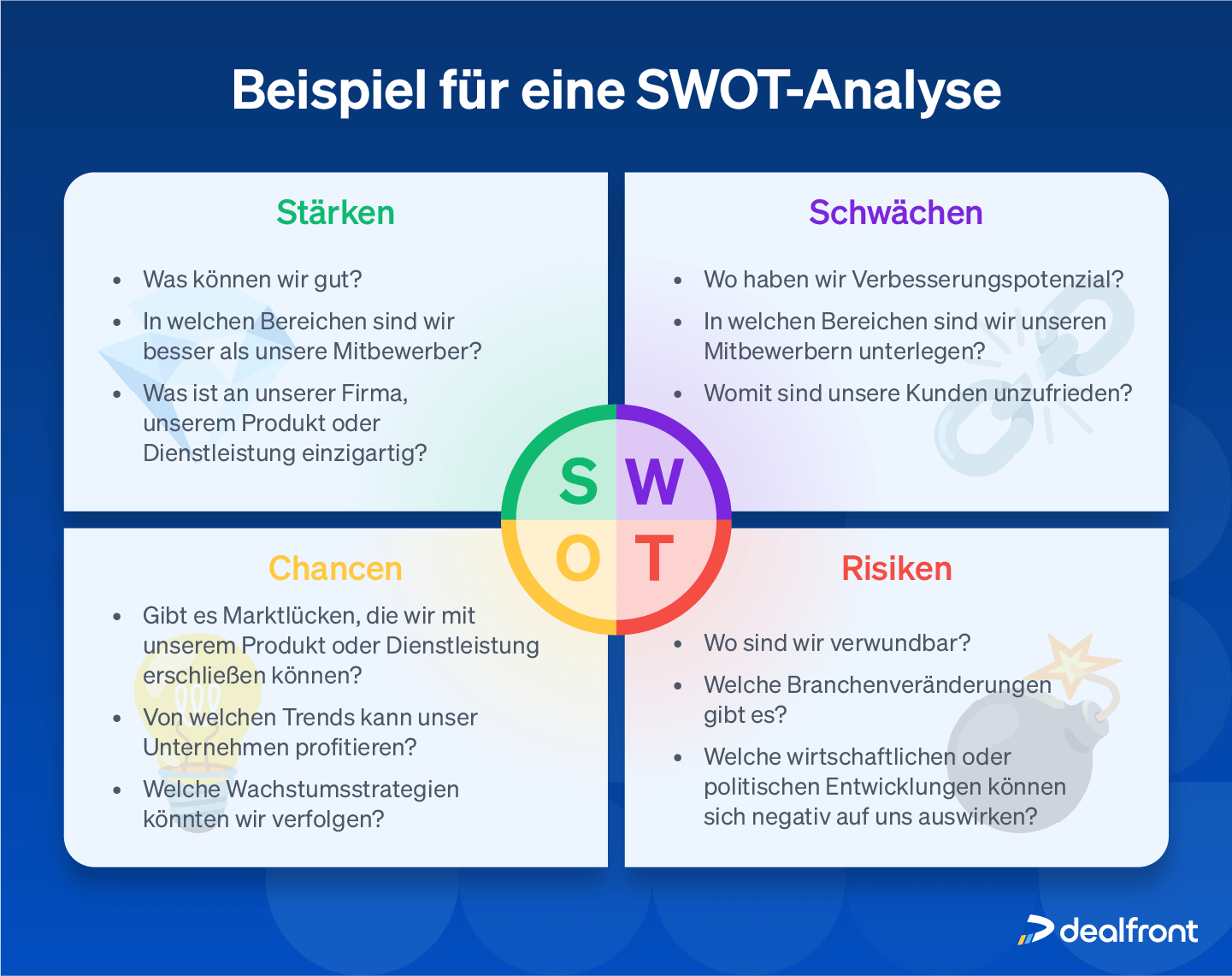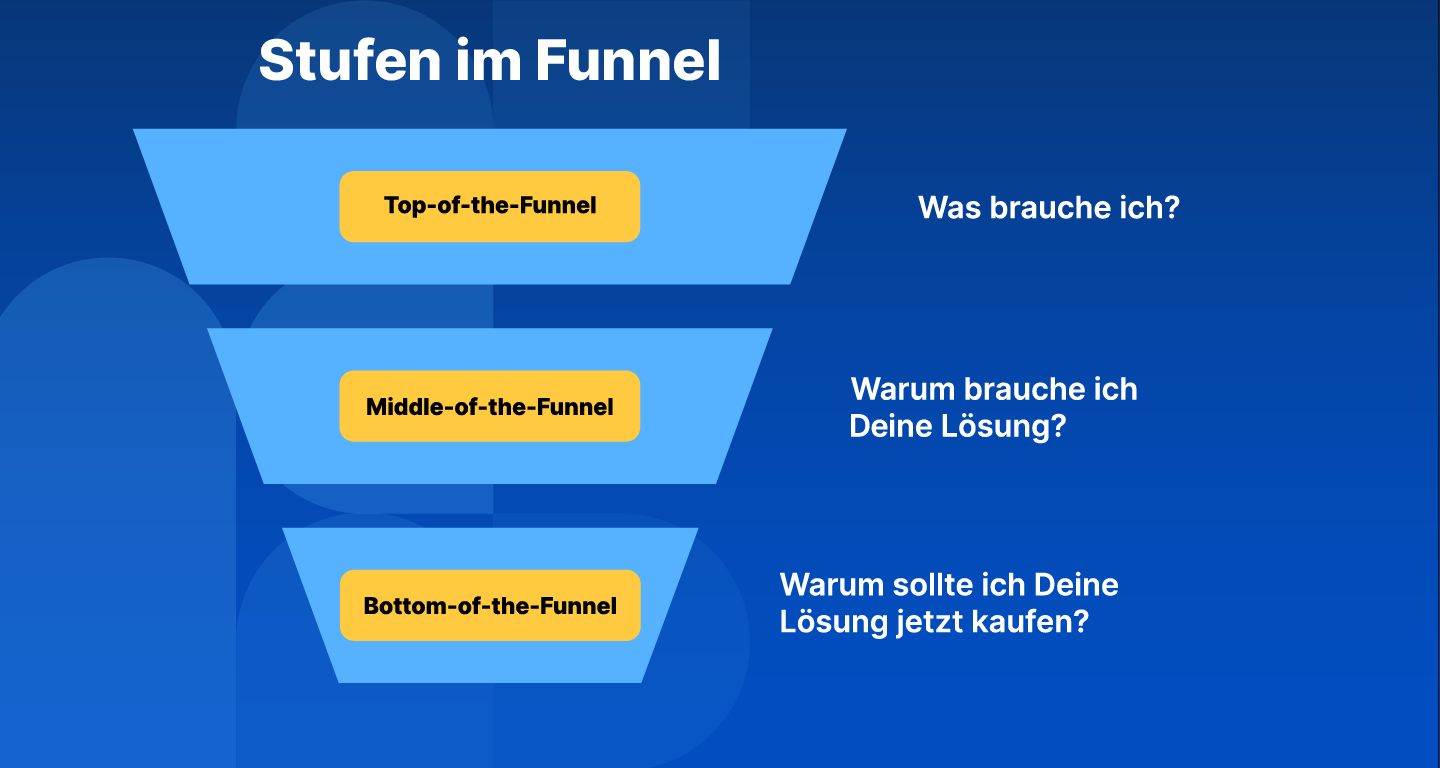Product launches are complex and involve various tasks. They include defining target customers, evaluating competition, assessing product-market fit, and crafting compelling product messaging.
Without a structured approach to managing these moving parts, one mistake after another can occur. For example, you might use weak unique selling points that lead to unsuccessful launches. That's why developing a go-to-market (GTM) strategy is essential.
An excellent go-to-market strategy removes the guesswork from product marketing and simplifies informed decision-making based on a thorough understanding of the target market.
Do you need to know how to create a go-to-market strategy? Check out our insider’s guide to crafting an effective one for your business.
What is a go-to-market strategy?
A go-to-market strategy is a tactical roadmap for launching a new product or core feature or introducing an existing product into a new market. It involves multiple marketing assets, including pricing models, buyer personas, and sales strategies.
Effective go-to-market strategies address the who, what, how, when, and where of launching a new product or venturing into a new market.
Components of a go-to-market strategy
There are usually four main elements of a go-to-market strategy:
Product-Market Fit: Identify the problems your product addresses.
Target Audience: Define who experiences these problems, their willingness to pay, and their pain points.
Competition and Demand: Assess existing offerings and market demand.
Distribution: Determine the channels for product/service distribution, such as a website, app, or third-party distributor.
You may prefer to leverage go-to-market platforms like our own to establish and execute your strategy framework. At Dealfront, we provide access to extensive data layers, enabling precise targeting, website visitor behavior tracking, lead outreach, and B2B display advertising promotion.
What is the purpose of a go-to-market strategy?
A go-to-market strategy should give you a strong understanding of your product, potential addressable market, ideal customer, and competition. Understanding how all these parts interact with each other will influence the success of your product launch.
For instance, by understanding your competition's unique selling points, you can craft brand messaging that differentiates your product and makes it more attractive to customers. Similarly, by establishing a strong understanding of your target customer, you can identify the best places to advertise your product for optimal reach.
Who needs a go-to-market strategy?
Go-to-market strategies aren't just about physical products. Any business launching something new and aiming for effective audience reach and sustainable growth can benefit from a go-to-market strategy. For instance:
Established businesses introducing new products or entering new markets require a GTM strategy for a successful launch.
Small businesses expanding their markets or product lines can use a GTM strategy to guide their efforts.
Businesses undergoing strategic changes like mergers or new business models benefit from updating or creating a GTM strategy aligned with their new direction.
Companies facing heightened competition utilize GTM strategies to highlight key differentiators and attract customers.
Who is responsible for a go-to-market strategy?
A select group of senior stakeholders from your revenue function, including sales and marketing, as well as product teams should oversee your B2B SaaS go-to-market strategy. This streamlined structure enables quicker feedback loops, iterative improvements to the GTM strategy, and product development compared to larger teams.
To foster alignment within the pod, ensure all members are held accountable to agreed-upon lead generation KPIs. At the start of your go-to-market initiative, the pod should define the ICP (Ideal Customer Profile), align on messaging and positioning, and share insights across departments.
The pod should then meet weekly for detailed data analysis, addressing sales team challenges, and resolving key product issues.
Benefits of a go-to-market strategy
With a strong go-to-market business plan, you can:
Clearly define your launch goals and what success looks like for you: This ensures all stakeholders, from product to sales and marketing, are on the same page.
Establish a firm product-market fit: The strategy allows you to identify gaps in the market that your product can fix. It also helps you see better opportunities for positioning your product against other established ones.
Make the product launch more efficient: GTM strategies help eliminate costly trial-and-error. Since they require you to assess the market closely, a GTM strategy aids you in making informed decisions and reduces resource wastage.
Reduce time to market: A great GTM strategy will ensure alignment between all stakeholders as they work towards a clear goal, reducing the time needed to get from ideation to actualization.
Establish strong brand awareness: A solid GTM strategy will help you identify the best platforms for spreading brand awareness. It will also inform you how to approach marketing on these different platforms.
Grow exponentially: A GTM strategy will bring clarity to most aspects of your target market, from buyer personas to messaging tactics, preparing your business for growth in the future. It becomes easier to double down on specific marketing strategies and pivot your messaging whenever they fail to deliver results.
The difference between a GTM strategy and a general marketing strategy
The business world often uses GTM and general marketing strategies interchangeably, but they’re quite different.
A GTM strategy is a blueprint for launching a new product or core feature or introducing an existing product into a new market. This blueprint outlines the steps to take throughout the launch, from product marketing to sales enablement. It is a short-term strategy that provides a roadmap for sales, product, and marketing teams.
A general marketing plan outlines how to promote the product in the target market, from messaging to the marketing channels to use. It is often a subset of the GTM strategy but also informs the long-term product promotion strategy beyond the product launch.
What are the different types of go-to-market strategies?
There are two primary go-to-market strategies: sales-led and product-led.
Sales-led | Product-led |
Employs B2B marketing to generate interest in a product, often through content and demos. | Leverages the product itself to attract and retain users. |
Sales teams engage with prospects to convert them into customers. | The product's value proposition drives user adoption and upgrades. |
In recent years, a variation of these two main strategies has gained popularity. As a hybrid approach, product-led sales uses freemium or trial versions of a product to acquire prospects. Sales-based strategies are then used to transform these prospects into loyal, paying customers. Product-Led Sales: Combining the Best of Product-Led Growth and Sales, written by our very own Vincent Jong, has more information on what product-led sales can look like for your business.
Go-to-market strategy template
Whether starting a new venture or expanding into a new market, a solid go-to-market strategy offers clarity and risk reduction. The following template lays the groundwork for success.
Specify the issue you want to solve
Define your target audience
Do your industry research
Clarify your value proposition
Define your pricing strategy
Create consistent messaging across teams and platforms
Map out the buyer’s journey
Craft a sales plan
Choose marketing channels
Create processes and automation
Sales enablement
Assess and adjust
Post-launch strategy
Let’s go into each step in more detail.
How to create a go-to-market strategy framework in 13 steps
Knowing how to build a go-to-market strategy is extremely valuable. It involves researching your target market, customers, and competition and building up your action plan on this research. Turn your product launch into a success by following this go-to-market framework:
Step 1: Define the problem you aim to solve
Defining the problem your product will solve for the customers is perhaps the most important step in creating a go-to-market plan. It helps you establish whether there is an alignment between market demand and the solution your product offers.
All great products fill holes in the market—issues the current market players hadn’t addressed well enough. For instance, Uber made moving around convenient, and Airbnb allowed globetrotters to travel to new places without worrying about finding reliable accommodation.
By conducting product-market fit research, you can get a sense of the viability of your solution to the problem you’re targeting. Your research should answer three essential questions:
What problem does my product solve?
Are there enough people looking for a solution to this problem?
How is my product better at addressing those unmet needs than my competitors?
Dedicate enough time to conducting market research. Start by surveying your target customers. Ask questions about their frustration with the current solutions or the lack thereof. Confirm whether your version of the solution would be good enough for your target customers.
Visit social sites like LinkedIn and Reddit, where your target customer hangs out. What are their sentiments on the problems you’re looking to solve? You can use this data to adjust your product.
Check out software review sites like G2, GetApp, and Capterra, too. Since your target customers are likely to leave their complaints here, you can use the information from these sites to define the problem you’re addressing.

You may also want to create a minimum viable product (MVP) to prove there’s enough demand for your product. An MVP is an initial version of your product that has just enough features to attract customers and help you validate your ideas. It’ll help you identify gaps in your ideas and make necessary iterations without the cost and risk of creating a fully functional solution.
For instance, Airbnb founders started renting their apartments to tech conference attendees to test the level of demand for the service. They first ensured people would be willing to pay to sleep at a stranger’s home before proceeding with the next step of developing their product.
Step 2: Define your target audience
When looking at how to create a go-to-market strategy, remember there isn’t a one-size-fits-all product that will delight all possible customers. Target a smaller group of people rather than casting a wide net. By casting a wide net, you dilute your messaging and product’s unique selling points, limiting the success of your launch.
That’s why it’s important to define your target audience through ideal customer profiles and buyer personas.
What is your ideal customer profile (ICP)?
An ICP is a description of the perfect customer that you’ve made your product for. In the B2B world, it refers to the hypothetical company that would benefit the most from your product or solution and is most likely to buy it.
Defining your ICP will help the sales team assess whether a lead is worth chasing, as leads that match your pre-defined profile are more likely to convert to paying customers.
You can define your ICP based on multiple aspects, including:
Industry: Identify the industry of your target customer.
Geography: What is the location of your ICP? This information can help you craft marketing campaigns targeted towards their specific region for maximum impact.
Revenue: Defining your target customer based on their revenue will help you pick a suitable pricing strategy to make your product more appealing.
Company size: Defining the average company size of your ICP will help you tailor your solution and messaging to their immediate needs.
Pain points: What are the main barriers to success for your ICP?
A comprehensive ICP will also inform other parts of your GTM strategy, from the marketing channels you choose to how you craft your messaging.
Identify buyer personas
Buyer personas are semi-fictional representations of your target audience based on their habits, goals, challenges, and motivators. Unlike ICPs, which represent ideal businesses you want to sell to, buyer personas refer to people with specific attributes, working within your ICP.
For example, the ICP for a company like Dealfront is a B2B company focusing its sales in European markets. We then divide the customer base into different buyer personas, such as marketing and sales employees.
A marketing employee would want to validate their campaign effort by identifying the companies visiting the company website through different channels. A sales employee would be interested in the prospecting solution to generate a list of potential companies to sell to and find contact details of decision-makers to reach out to.
Both personas fit Dealfront’s ICP but have different motivators and behaviors that call for segmented product messaging.
Here’s an example of a buyer persona:

Creating buyer personas starts with conducting deep customer research. You can find information on your ideal customer online from their social media conversations or their talks with your sales and customer success teams.
Deploying conversational intelligence tools like ZoomIQ and Gong at different customer touchpoints will make collecting this data easy. Google Analytics and customer surveys are other excellent sources for insights into your ideal customers.
You can also employ tools like Leadfeeder to gain insights into which company is visiting your website exactly.
When creating buyer personas, ask questions that can help you differentiate one buyer group from the next, such as:
What spaces do my buyer personas visit online?
What are the daily work challenges and stressors of my buyer personas?
What motivates my buyer personas to purchase my product?
What objections to purchasing my product/services do my buyer personas have?
How do my buyer personas describe the problem that I’m solving?
Will my product be a must-have or an optional addition to their typical workday?
Step 3: Industry research
The quality of your industry research will be a big part of your product launch’s success. You want to understand the market inside out to know how to surpass the competition with your offering.
Start by assessing the competition. Who are the key players, and what are their unique selling points? Then, create a SWOT (strengths, weaknesses, opportunities, and threats) analysis of the competition. This will help you poke holes in the competition’s business concepts. You can use these gaps to your advantage and create a strong product and great messaging.

Focus on the number of competitors and their market share, too. Is the market saturated or underserved? While you’ll need to work hard to differentiate your business in a saturated market, you’ll need to establish yourself as a category leader in underserved markets.
For instance, if you were trying to establish a social media platform, you would need to be quite differentiated from the established media giants. One possible option would be to market your business as a web3 social media platform, as it would address user issues with existing social media giants, such as privacy concerns.
Zero in on the competitor’s pricing strategies and positioning and customers’ perception of them. Are customers happy with the competition’s pricing strategy? Are there holes in the competition’s positioning and messaging that you can exploit?
After assessing the competition, evaluate the demand for your product by looking for indications that customers want your product. Are people discussing the problem you solve, and to what extent are they doing it?
Quantifying the demand for your product/solution ensures that you’re on the right track. It will also help you avoid investing resources into products that potential customers aren’t ready to buy.
Investigate market trends to get a clear picture of demand. For instance, while the pandemic negatively impacted the hospitality industry, the e-commerce industry benefited greatly, as so many people shifted towards online shopping to avoid contact. Understanding market trends will help you make decisions that will improve the success of your product/feature launch.
Step 4: Clarify your value proposition
Why should your target customers choose your business over the competition? In what ways have you differentiated yourself from the competition?
A unique value proposition can help you answer such questions of your customers. This statement briefly explains what your product is, the problem it solves, and the ultimate value it offers customers.
To formulate your unique value proposition statement, list the top ways your product adds value to customers. Next, conduct a SWOT analysis of your competition to gauge how your product differs from theirs. You can then create a simple statement that best portrays both aspects—the value your product provides and what makes it different.
For instance, Uber’s immediate benefits to customers are allowing users to book transport quickly, ensuring user security throughout their journey, and providing comfort while moving from one place to the next. This makes its unique value proposition, “we re-imagine the way the world moves,” a perfect fit. If the company ever introduces a new product, such as a freight solution, it will still be in line with its unique value statement.
Step 5: Define your pricing strategy
Your pricing will make or break your GTM strategy, as price affects how customers perceive your product and your sales cycle. Expensive products require long sales cycles as your sales team must do more to convince customers to buy. You might also need to offer potential customers free trials or demos for such products to show them the value they can get from the product before they commit to a purchase.
Since less expensive products are a smaller commitment, they tend to have shorter sales cycles. Potential customers usually need less convincing with lower pricing, but you’ll generate less money from each purchase.
A few pricing strategies you can consider implementing to avoid the issues above and gauge the perfect pricing for your business model include:
Competition-based pricing: Under this pricing strategy, you’ll use your competitor’s prices as a baseline and pick a price point based on it. If you don’t veer too far off the baseline, you can choose a lower or higher price point. This pricing strategy is ideal for saturated markets where price is a customer decision driver.
Freemium pricing: Under this pricing strategy, you’ll use a subscription model with multiple pricing tiers, with the base tier being free. You’ll allow customers to test your product for free and decide whether they want to upgrade to premium features. Such a strategy can be effective if your product is complex since it helps customers learn how to use it and understand its value before they invest in it.
Dynamic pricing: Under this pricing model, you’ll adjust your prices based on ebbs and flows in demand. Businesses in the hospitality and transport industries, like hotels and airlines, frequently use this strategy. If you’re in an industry that experiences seasonal changes in demand, dynamic pricing can help you acquire huge profits in the high season and keep your business afloat in the low season.
Step 6: Craft consistent messaging across teams and platforms
Your messaging is the magnet that draws customers toward your product. It addresses their pain points and frustrations and counters sales objections. Therefore, you should ensure your messaging is always on-point and consistent across all platforms to avoid confusing your customers and causing a mixed customer experience.
Consistent messaging equals consistent brand experience. With all your messages and conversations aligning perfectly—not only for product launches but brand interactions in general—you are more likely to inspire trust in your customers and build brand authority.
To do so, customize brand messaging to different buyer personas, set characteristic visual and textual elements for all your content, and create guidelines. All your employees should be united around your messaging. Only that way can your organization deliver on consistency.
Step 7: Map out the buyer’s journey
The buyer’s journey represents the stages customers go through as they discover, assess, and buy a new product or service. Mapping out the customer journey will help you identify your customers’ decision drivers and common sales objections, further informing your content marketing strategy.
These are the three stages buyer’s journeys mainly involve and the content you can create for each to inspire customer action:
Top of the funnel: At this stage, customers recognize they have a specific problem but don’t know how to solve it—or don’t know your brand can solve it. Serve these customers with content and social campaigns that spread brand awareness. For instance, GoPro’s social media campaigns, like the #HomePro campaigns, are great examples of campaigns that have helped market a brand to new audiences.
Middle of the funnel: At this stage, customers know about your brand but compare you to the competition. Serve these customers with content that showcases your brand as the best option. For instance, content that shows your product in action or compares your brand with competitors will help customers lean more toward your business.
Bottom of the funnel: At this stage, customers already believe your product can solve their problem but need a little push to make the final purchase. Serve these customers with content that solidifies their belief in your brand. Case studies and customer reviews will help turn leads into paying customers.

Serving customers with the right content allows you to guide them through the different stages of their journey and motivate action. You can also use tools like Dealfront’s Leadfeeder to gain insights into the behaviors of companies that visit your website and determine their stage in the purchase journey. The tool makes it possible for sales to understand the perfect time to prospect.
Step 8: Create a sales plan
Creating a strong sales plan ensures you’re approaching potential customers correctly. It will also ensure your sales team understands your business strategies and recognizes potential GTM obstacles they must prepare for.
The first step in creating a sales plan is determining whether you want to use product-led growth (PLG) or sales-led growth (SLG). While PLG works for differentiated, simple products that attract customers by themselves, SLG works for products in saturated markets or complex products that require salespeople to nudge buyers into making a purchase.
Think of Slack (PLG) vs. Oracle (SLG). Since Slack is an easy-to-use self-service app, target users don’t have to be guided by a sales team to adopt the product. In comparison, Oracle’s suite of products, such as ERP and CX solutions, are quite complex. Leads often need sales teams to walk them through the products and their features before they can make a purchase.
Align sales and marketing
Regardless of the chosen sales plan type, ensure you align your sales and marketing teams so they work as a unit. Siloed teams often result in wasted resources, misaligned messaging that confuses customers, and lost sales opportunities.
The marketing team might create content that does little to improve the sales team's success—and the other way around. It is also possible for the two teams to promise customers different things. Having a joint effort where marketing targets the companies or markets that the sales team is focused on helps boost conversion rates.
When teams align, the marketing team can create content that will turn readers into great leads for the sales team. In turn, the sales team can share customer feedback with the marketing team so that they can improve the messaging around the product launch.
Nurturing such a symbiotic relationship will also give your product the best chance at thriving post-launch.
Define your sales cycle
Sales cycles represent repeatable processes your sales team follows to close a lead. The standard sales cycle involves six steps:
Finding high-quality leads
Connecting with leads
Qualifying leads
Presenting to leads
Countering sales objections
Turning leads into buyers
Defining your sales cycle steps ensures that you’re in control of your sales process. A well-defined cycle will help you create structure around it to drive repeatable results.
To define your sales cycle, map out the steps your sales team will need to take to close a lead, from reaching out to a prospect over sharing demos to finalizing the sale.
Step 9: Select marketing channels
Your first step for selecting a marketing channel to market your new product should be identifying where your target customers spend their time. In this digital age, potential customers are often active on multiple marketing channels. You may need to be present on all or most of them to engage with your prospects.
But while this may be viable for large corporations with large marketing teams, small businesses may want to focus their marketing efforts on a single channel to avoid burnout and increase the chances of success. They can also pay attention to how successful their marketing is already on different channels and pump more marketing dollars into the most prosperous ones, reducing the cost of large-scale marketing.
For instance, if your ideal customers prefer getting email recommendations and promotions from you, use this channel to inform leads about your product launch. You can also cut back on low-performing marketing channels, but only after you try all viable marketing tactics without results.
Slidebean is an excellent example of a business that has found success marketing on a specific marketing channel. The pitch deck builder uses YouTube as a demand generation platform since startup founders (their target audience) tend to spend a lot of time on it.
Step 10: Create processes and automation
The execution of your go-to-market strategy is as important as the strategy itself. Without the right processes, integrations, and sales automation software in place, you may find it challenging to track progress and see the strategy bear fruits.
Therefore, create processes that help you:
Collect data and track goals: Define specific milestones of your GTM strategy and establish ways to measure success. Pick tools that will help you collect and analyze data. For instance, a tool like Leadfeeder will help you manage, update, and draw insights from your website traffic to make informed decisions.
Pivot in the face of setbacks: With the right processes in place, it will become easy for your team to know how to deal with setbacks. For instance, once you establish a process that defines how the sales team counters common prospect objections during sales conversations, the team can anticipate and counter these objections early to increase conversions.
Creating both sales and marketing processes will be crucial to the successful launch of your product.
Marketing processes
Your marketing processes need to define how to promote your product. Create ones that map your marketing throughout different touchpoints and buyer journeys.
For instance, you can create A/B tests for product messaging to help you communicate your product’s value better. You can also craft a content creation process that defines how to create and post content and how to respond to customer comments. It can also outline the best SEO (search engine optimization) practices to help you rank high on search engines.
Sales processes
Create a go-to-market sales strategy template that outlines what the sales team should do at every part of the sales cycle to close leads. For instance, you can define an outreach process your sales teams can use to approach leads effectively or a post-sale process they can follow to communicate with customers to reduce churn and collect feedback.
Find ways to automate these processes, too. For instance, you can create an email sequence to send out sales and marketing material that nudges leads through the different stages of the sales funnel.
Step 11: Sales enablement
Your staff is the engine that will run your GTM strategy, which makes it essential to train them effectively. You should conduct training that educates employees on the product, your target audience, the competition, and your unique selling points.
The stronger the sales, support, and customer success teams understand your product, the better they will be at speaking about it. They will create a unified front for marketing your product.
Work with your team to create sales enablement material. This can include battle cards, sales playbooks, training and demo videos, and buyer persona documents. This material will supply your sales team with enough information and assets to turn leads into buying customers.
You’ll also need to collaborate with the marketing team to create a strong content marketing strategy. The strategy should outline your approach to content before, during, and after the product launch.
Step 12: Assess and adjust
Set objectives and key results (OKRs) that you can track before, during, and after the product launch. Defining these goals early on will help you determine what’s working and identify loopholes in your strategy. For instance, if you’re creating pre-launch content to increase awareness, you can look for indicators that your messaging is working to pivot accordingly.
If your messaging is doing great, double down on it. If it isn’t resonating with people as much as you’d expected, try a new approach to make it more effective. Be sure to align your OKRs and goals with the rest of the organization’s goals.
Step 13: Post-launch strategy
While a post-launch strategy isn’t part of your go-to-market strategy, it is essential to have one. This strategy ensures you can seamlessly transition from launching your product to marketing it effectively afterward.
Your post-launch strategy should include generating more content, responding to feedback, product adoption and adjusting marketing strategies accordingly. Aim to create content that keeps the new customers engaged and encourages retention even after product launch. The content can address customers’ questions, educate people about your product, or compile the initial customer reviews you receive.
Listen to any feedback you receive from customers, as this can be a treasure trove of insights. Watch out for customer complaints and details on what they liked. You can use this data to adjust your marketing or product to serve your target customers better.
Go-to-market strategy examples
Let’s take a look at three inspiring examples of go-to-market strategies, including a case study of a go-to-market strategy for startups:
1. FinTech
The Dutch-based payment service provider Fintech wanted to expand into the DACH area from their secure market in the Benelux countries. To ensure that their entry into this market was smooth and successful, Fintech enlisted the help of Dealfront.
Fintech already knew they wanted to solve the problem of stressful and inflexible online payment solutions that required long-term contracts. With Dealfront’s tools, they were able to complete the next steps of their GTM strategy. The comprehensive market overview provided by our GDPR compliant database supported their industry research, while our numerous prospect filter options helped them hone in on their ICP, providing a strong base for the next steps in their GTM strategy.
2. Codecademy
Codecademy’s GTM strategy helped it attract 200,000 users within three days of launching its minimum viable product. The decision-makers saw there was a nearly unmet demand for accessible coding programs. They created a free JavaScript course and advertised it on news platforms like Hacker News. They also eliminated friction in the learning process by gamifying it.
This successful launch has propelled the site to becoming among the most trusted learning resources for programmers, garnering over 50 million users.
3. FitBit Smart Coach
Fitbit, renowned for its activity trackers resembling smartwatches, launched Smart Coach, a premium service and personal training app integrated with the user's Fitbit.
Their GTM strategy began with clear, achievable objectives, including establishing brand awareness, increasing subscription revenue, and enhancing the subscription attach rate.
They initiated the "Get More With Fitbit" campaign, employing paid and owned channels to target Fitbit's user base. Paid channels included retargeting display ads driving potential customers to a dedicated landing page. Additionally, they utilized push notifications, social media, and newsletters. The campaign generated $192 million in revenue.
4. Airbnb
Airbnb's pioneering approach to the sharing economy transformed the hospitality industry, exemplifying effective go-to-market strategies for startups.
Airbnb capitalized on the rising trend of the sharing economy in 2008, offering a unique solution for affordable and personalized accommodations, disrupting the traditional hospitality sector.
The company prioritized user experience by creating a user-friendly platform that simplified the booking process, ensuring a seamless and enjoyable experience for hosts and guests.
Airbnb's aggressive digital marketing campaigns played a crucial role in rapidly expanding its user base. Leveraging various online channels, they successfully reached a global audience.
Go-to-market strategy for startups: top tips
Embracing Airbnb's go-to-market strategy can help startups navigate competition, foster growth, and establish themselves in their industries effectively. Here are some top tips for startups:
Identify Disruption Opportunities: Seek chances to innovate and challenge traditional industries with consumer-centric solutions.
Emphasize User Experience: Create intuitive products prioritizing customer satisfaction and convenience.
Bold Marketing: Develop a robust digital marketing strategy to convey your value proposition and inspire your audience effectively.
Setting your go-to-market strategy in motion
Transitioning from concept to launch can be stressful. A go-to-market strategy brings order to your product launch, enhancing its chances of success by facilitating smooth coordination across all parts of the launch, from messaging to sales processes.
Simplify it all and use our 13-step go-to-market framework to optimize your product launch success.



